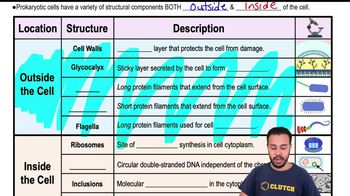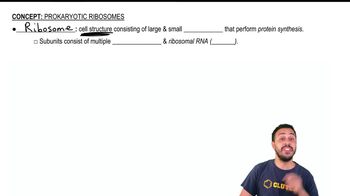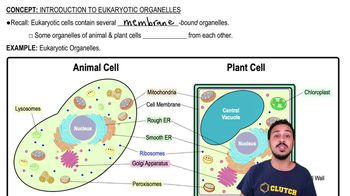Which of the following pairs is mismatched?
a. glycocalyx—adherence
b. pili—reproduction
c. cell wall—toxin
d. cell wall—protection
e. plasma membrane—transport
 Tortora 14th Edition
Tortora 14th Edition Ch. 4 - Functional Anatomy of Prokaryotic and Eukaryotic Cells
Ch. 4 - Functional Anatomy of Prokaryotic and Eukaryotic Cells Problem 4.9a
Problem 4.9a Verified step by step guidance
Verified step by step guidance



Which of the following pairs is mismatched?
a. glycocalyx—adherence
b. pili—reproduction
c. cell wall—toxin
d. cell wall—protection
e. plasma membrane—transport
Starch is readily metabolized by many cells, but a starch molecule is too large to cross the plasma membrane. How does a cell obtain the glucose molecules from a starch polymer? How does the cell transport these glucose molecules across the plasma membrane?
Which of the following pairs is mismatched?
a. metachromatic granules—stored phosphates
b. polysaccharide granules—stored starch
c. lipid inclusions—poly-β-hydroxybutyric acid
d. sulfur granules—energy reserve
e. ribosomes—protein storage
Match the characteristics of eukaryotic cells in column A with their functions in column B.
<IMAGE>
Describe binary fission.
Use the following graph to answer questions 3 and 4.
<IMAGE>
Which of the lines best depicts the log phase of a thermophile incubated at room temperature?